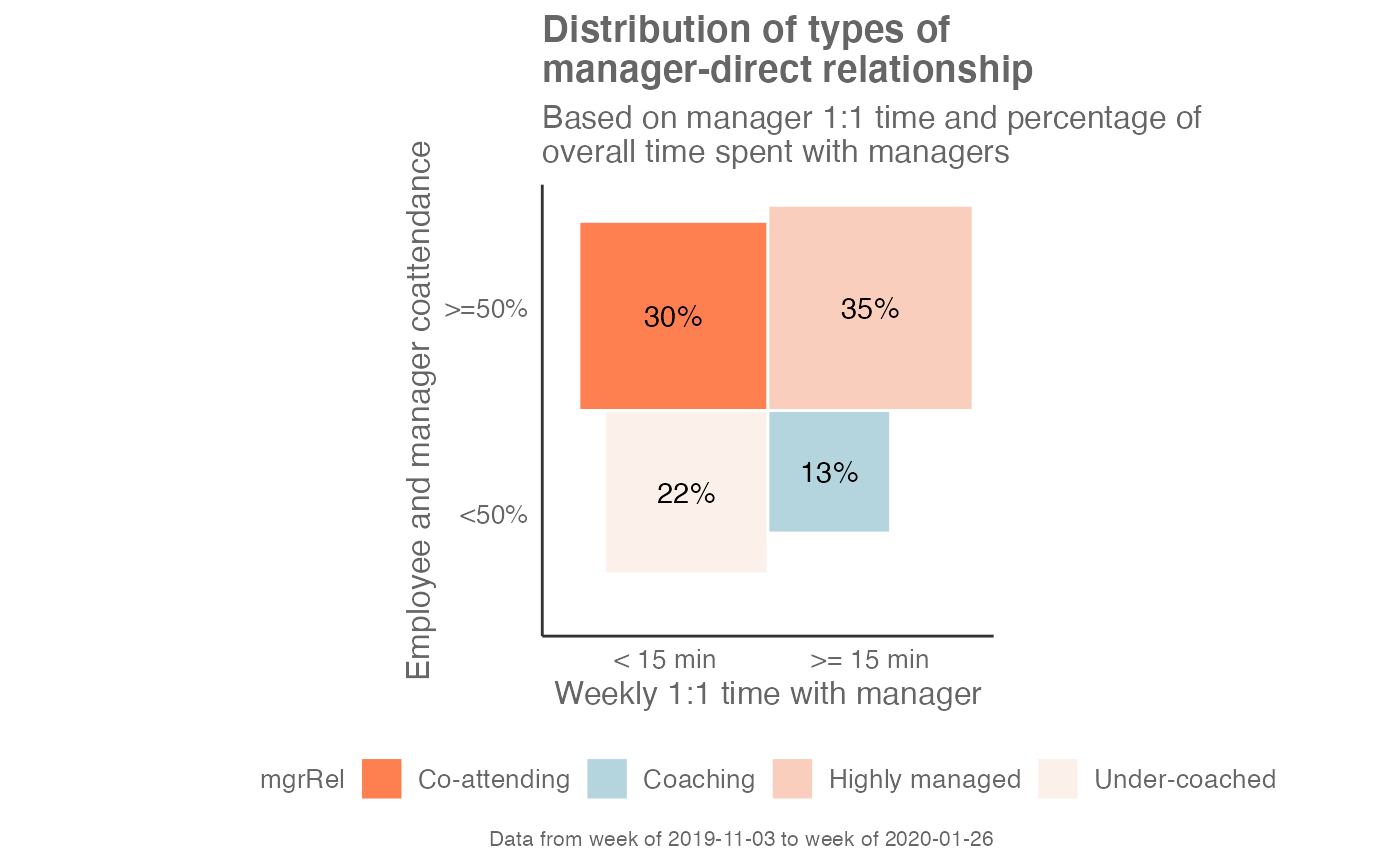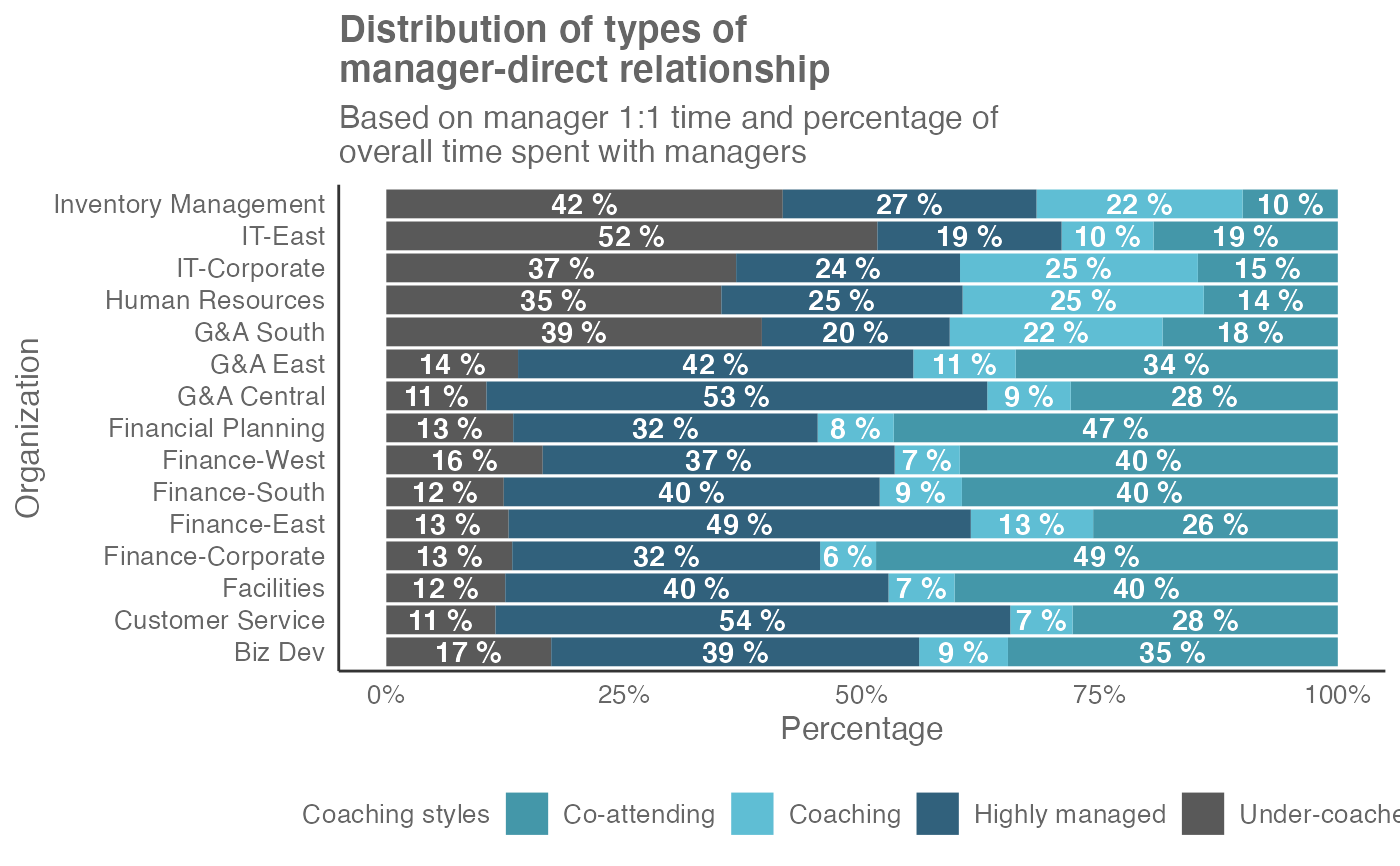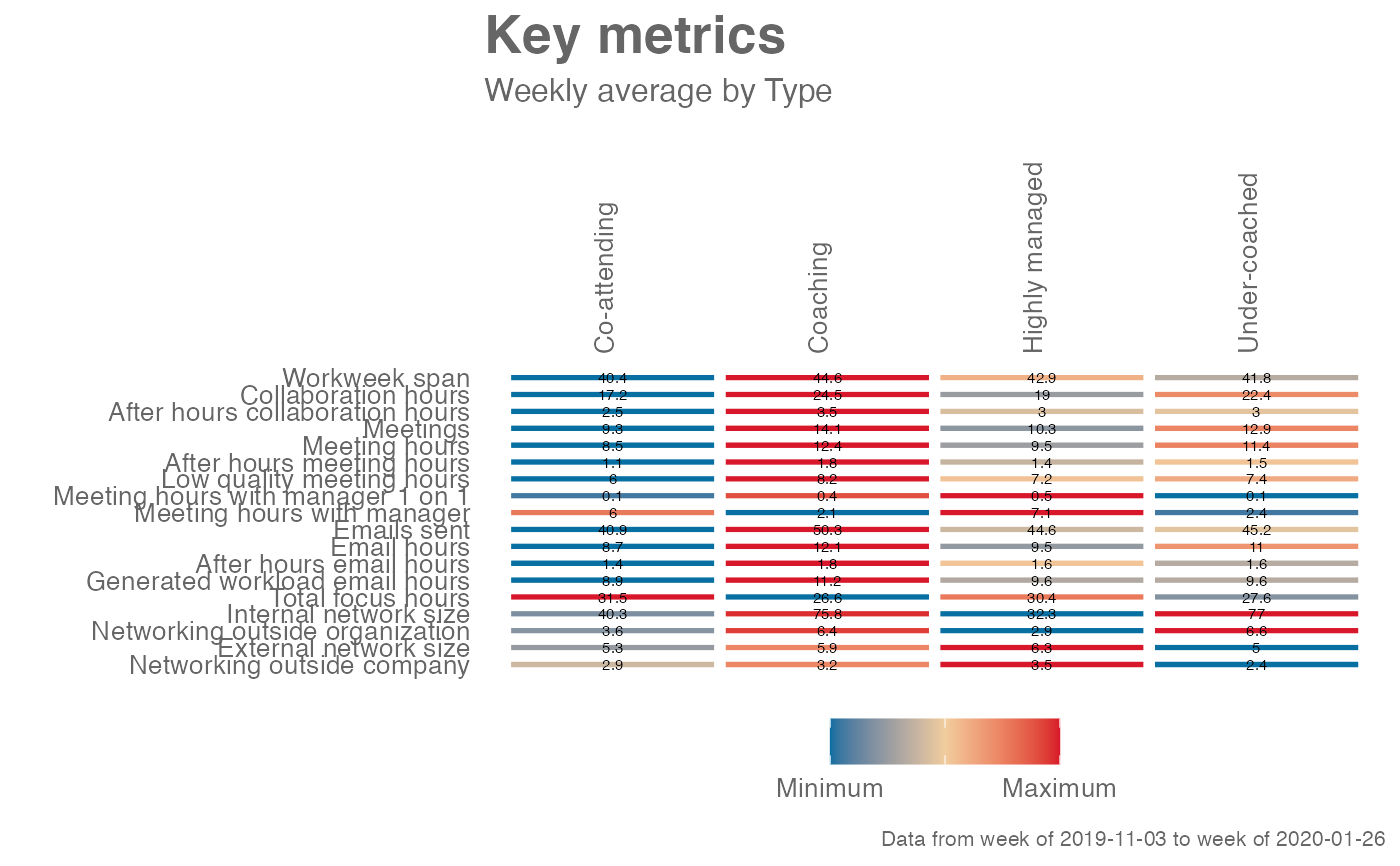Generate the Manager-Relationship 2x2 matrix, returning a 'ggplot' object by default. Additional options available to return a "wide" or "long" summary table.
mgrrel_matrix(
data,
hrvar = NULL,
mingroup = 5,
return = "plot",
plot_colors = c("#fe7f4f", "#b4d5dd", "#facebc", "#fcf0eb"),
threshold = 15
)Arguments
- data
Standard Person Query data to pass through. Accepts a data frame.
- hrvar
HR Variable by which to split metrics. Accepts a character vector, e.g. "Organization". Defaults to
NULL.- mingroup
Numeric value setting the privacy threshold / minimum group size. Defaults to 5.
- return
String specifying what to return. This must be one of the following strings:
"plot""table""data"
See
Valuefor more information.- plot_colors
Pass a character vector of length 4 containing HEX codes to specify colors to use in plotting.
- threshold
Specify a numeric value to determine threshold (in minutes) for 1:1 manager hours. Defaults to 15.
Value
A different output is returned depending on the value passed to the return
argument:
"plot": ggplot object. WhenNULLis passed tohrvar, a two-by-two grid where the size of the grid represents total percentage of employees is returned. Otherwise, a horizontal stacked bar plot is returned."table": data frame. A summary table is returned."data": data frame. A long table grouped at thePersonIdlevel with the following columns:PersonIdHR variable supplied to
hrvarCoattendanceRateMeeting_hours_with_manager_1_on_1mgr1on1Type
See also
Other Visualization:
afterhours_dist(),
afterhours_fizz(),
afterhours_line(),
afterhours_rank(),
afterhours_summary(),
afterhours_trend(),
collaboration_area(),
collaboration_dist(),
collaboration_fizz(),
collaboration_line(),
collaboration_rank(),
collaboration_sum(),
collaboration_trend(),
create_bar(),
create_bar_asis(),
create_boxplot(),
create_bubble(),
create_dist(),
create_fizz(),
create_inc(),
create_line(),
create_line_asis(),
create_period_scatter(),
create_rank(),
create_sankey(),
create_scatter(),
create_stacked(),
create_tracking(),
create_trend(),
email_dist(),
email_fizz(),
email_line(),
email_rank(),
email_summary(),
email_trend(),
external_dist(),
external_fizz(),
external_line(),
external_network_plot(),
external_rank(),
external_sum(),
hr_trend(),
hrvar_count(),
hrvar_trend(),
internal_network_plot(),
keymetrics_scan(),
meeting_dist(),
meeting_fizz(),
meeting_line(),
meeting_quality(),
meeting_rank(),
meeting_summary(),
meeting_trend(),
meetingtype_dist(),
meetingtype_dist_ca(),
meetingtype_dist_mt(),
meetingtype_summary(),
mgrcoatt_dist(),
one2one_dist(),
one2one_fizz(),
one2one_freq(),
one2one_line(),
one2one_rank(),
one2one_sum(),
one2one_trend(),
period_change(),
workloads_dist(),
workloads_fizz(),
workloads_line(),
workloads_rank(),
workloads_summary(),
workloads_trend(),
workpatterns_area(),
workpatterns_rank()
Other Managerial Relations:
mgrcoatt_dist(),
one2one_dist(),
one2one_fizz(),
one2one_freq(),
one2one_line(),
one2one_rank(),
one2one_sum(),
one2one_trend()
Examples
# Return matrix
mgrrel_matrix(sq_data)
 # Return stacked bar plot
mgrrel_matrix(sq_data, hrvar = "Organization")
# Return stacked bar plot
mgrrel_matrix(sq_data, hrvar = "Organization")
 ## Visualize coaching style types
# Ensure dplyr is loaded
library(dplyr)
# Extract PersonId and Coaching Type
match_df <-
sq_data %>%
mgrrel_matrix(return = "data") %>%
select(PersonId, Type)
# Join and visualize baseline
sq_data %>%
left_join(match_df, by = "PersonId") %>%
keymetrics_scan(hrvar = "Type",
return = "plot")
## Visualize coaching style types
# Ensure dplyr is loaded
library(dplyr)
# Extract PersonId and Coaching Type
match_df <-
sq_data %>%
mgrrel_matrix(return = "data") %>%
select(PersonId, Type)
# Join and visualize baseline
sq_data %>%
left_join(match_df, by = "PersonId") %>%
keymetrics_scan(hrvar = "Type",
return = "plot")
